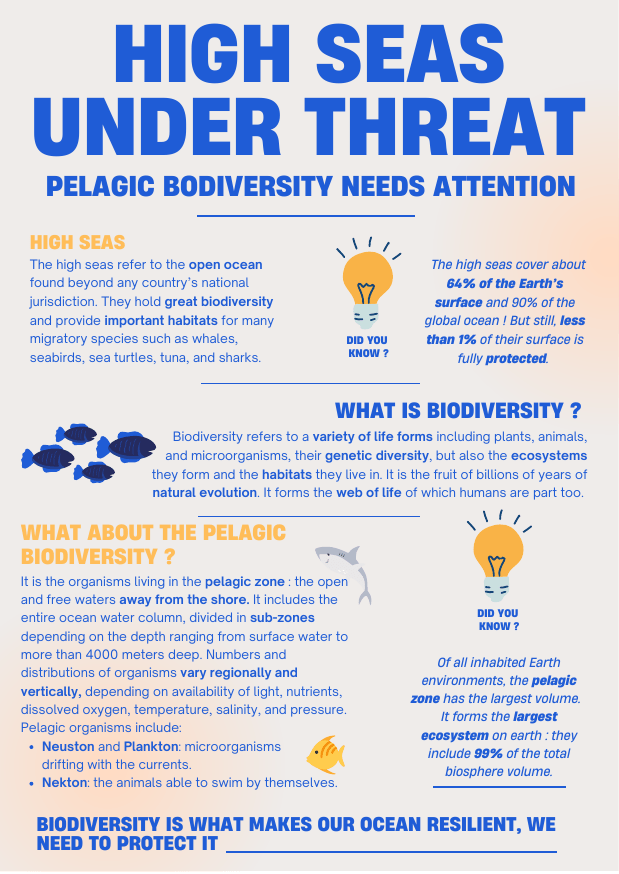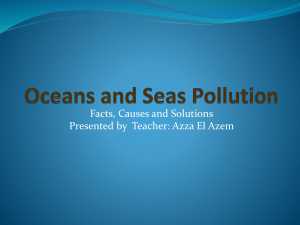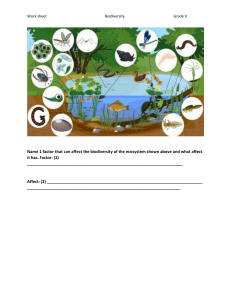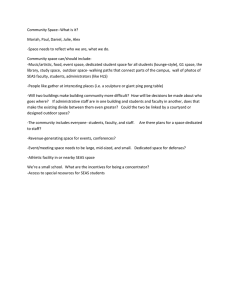
HIGH SEAS UNDER THREAT PELAGIC BODIVERSITY NEEDS ATTENTION HIGH SEAS The high seas cover about 64% of the Earth’s The high seas refer to the open ocean found beyond any country’s national jurisdiction. They hold great biodiversity and provide important habitats for many migratory species such as whales, seabirds, sea turtles, tuna, and sharks. DID YOU KNOW ? surface and 90% of the global ocean ! But still, less than 1% of their surface is fully protected. WHAT IS BIODIVERSITY ? Biodiversity refers to a variety of life forms including plants, animals, and microorganisms, their genetic diversity, but also the ecosystems they form and the habitats they live in. It is the fruit of billions of years of natural evolution. It forms the web of life of which humans are part too. WHAT ABOUT THE PELAGIC BIODIVERSITY ? It is the organisms living in the pelagic zone : the open and free waters away from the shore. It includes the entire ocean water column, divided in sub-zones depending on the depth ranging from surface water to more than 4000 meters deep. Numbers and distributions of organisms vary regionally and vertically, depending on availability of light, nutrients, dissolved oxygen, temperature, salinity, and pressure. Pelagic organisms include: Neuston and Plankton: microorganisms drifting with the currents. Nekton: the animals able to swim by themselves. DID YOU KNOW ? Of all inhabited Earth environments, the pelagic zone has the largest volume. It forms the largest ecosystem on earth : they include 99% of the total biosphere volume. BIODIVERSITY IS WHAT MAKES OUR OCEAN RESILIENT, WE NEED TO PROTECT IT WHY PROTECTING THE HIGH SEAS MATTERS The high seas are home to a diverse range of marine species and ecosystems that are essential to the health of the ocean, climate, planet, and humans. Many marine animals, such as whales, tuna, and sharks, spend the majority of their lives in these seas, travelling over vast ocean basins from feeding areas to breeding sites and back. Hence, those areas are extremely vulnerable to the effects of climate change, plastic pollution, overfishing, and other human activities, but they are poorly protected. WHAT ARE WE PROTECTING? DID YOU KNOW ? Since 1850, the ocean has removed 26 % of total anthropogenic emissions. The annual economic value of this high sea carbon storage is estimated at US$74 - US$222 billion. THE INTRINSIC VALUE OF PELAGIC BIODIVERSITY The protection of high seas biodiversity represents a big opportunity in the battle against global biodiversity loss. THE ECONOMIC VALUE OF THE HIGH SEAS Every single human being depends (in-)directly on the ocean. The deteriorating health of the high seas induces negative financial and economic effects for all of us. THE ECOSYSTEM SERVICES OF THE HIGH SEAS Such as: Carbon storage, climate regulation prevention of extreme weather events, food source, nutrient cycling. WHAT IS THREATENING PELAGIC BIODIVERSITY? CLIMATE DRIVERS Increased temperature, acidification, foodchain instability, worsend living conditions, species migration SHIPPING Collisions with wildlife such as whale strikes, transport of non-native species (invasive species), pollution (noise, oil, ...) Since 1970 the maritime trade volume has increased by 400% UNSUSTAINABLE FISHING Biodiversity loss, over-fished stocks, pollution, capture of non-targeted species (bycatch), habitat destruction PLASTIC POLLUTION Poisoning of marine animals through accumulated toxic heavy metals on plastic particles, physical harm of animals DID YOU KNOW ? It is estimated that plastic will outweigh all fish in the sea by 2050 INCREASING INTEREST IN THE EXPLOITATION OF THE OCEAN AS A GLOBAL COMMONS, GROWING MARITIME TRAFFIC AND INSUFFICIENT GOVERNANCE MAKE MANY HARMFUL AND EVEN ILLEGAL HUMAN ACTIVITIES GO UNSEEN AND UNPUNISHED IN THE HIGH SEAS. CURRENT MANAGEMENT IS INEFFECTIVE The ocean is a typical resource of the "commons." Management of human activities impacting the High Seas is inherently a global and intergovernmental effort. YET THE CURRENT GOVERNANCE IS HARDLY EFFECTIVE. Practically managed by Regional Fisheries Management Organisations FISHING (RFMOs). Measures include controlling and assigning catch quotas, restricting destructive methods, etc. However, the practical effect is limited: Geographical gaps in governance coverage Limited competencies or narrow membership of some RFMOs Subsidies are a huge driver--High Seas fishing is hardly profitable without subsidies. Relevant negotiations at the World Trade Organization (WTO) are still on-going. SHIPPING The International Maritime Organisation (IMO) oversees global shipping. Measures include technology improvements, pollution and dumping restrictions, speed restrictions, shipping lanes planning, etc. It also has limited effects: No legal power to enforce regulations Standards are not strict enough. BRIDGING THE GAP? PENDING NEGOTIATIONS PLASTIC POLLUTION In 2022, governments agreed to adopt an ambitious new agreement on ocean plastic pollution. But the conclusion of the treaty can be too late to effectively address the problem. CLIMATE DRIVERS Climate Negotiations have not been paying the ocean enough attention. The Biodiversity Beyond National Jurisdiction treaty is being negotiated to bridge the gap of High Seas governance, setting rules on Environmental Impact Assessment and facilitate Area-Based Management Tools (creating Marine Protected Areas, MPAs). Establishmen of MPAs is further going to be discussed at the Convention on Biological Diversity COP 15. THE TOP-DOWN APPROACH CURRENTLY HAS LIMITED EFFECT. PUBLIC PARTICIPATION IS NEEDED TO ACCELERATE GOVERNANCE FRAMEWORK CONSTRUCTION AND DRIVE ACTIONS FROM BOTTOM-UP. WE NEED YOUR ACTION ! DON'T KNOW HOW? TURN TO THE NEXT PAGE ! What can you do? 1. Talk to your family and friends about it They might not be aware of the issue and can spread the word. 2. Contact your local and national politicians Get in touch with local members of the national parliament and government leaders to urge them to take action on this issue. 3. Push for the faster construction of global high-seas governance Push for acceleration of the law-making process in WTO, Convention on Biological Diversity, etc. Through signing petitions & voting for politicians who speak up in favour of protecting the oceans, actively engage in politics or NGOs. 4. Consume seafood consciously Reduce your seafood consumption, check the labels (MSC& ASC) and choose more sustainable seafood like clams over fish. 5. Consume locally This can help to reduce maritime shipping which often leads to collisions with pelagic animals. 6. Reduce plastic consumption You can reduce your usage of single use plastic and properly recycle the plastic you use. DID YOU KNOW ? PROTECT OUR OCEANS ORGANISATIONS THAT PROTECT PELAGIC BIODIVERSITY _World Wildlife Fund _International Union for Conservation of Nature _Sea Shepherd Conservation Society _The Pew Charitable Trusts _Natural Resources Defense Council _Oceana _Ocean Conservancy _The Ocean Cleanup ... THERE'S STILL TIME. ACT NOW. You likely consume the equivalent of a credit card’s worth of plastic every single week, due to seafood consumption. HOW TO HAVE AN OCEAN-FRIENDLY CHRISTMAS Reduce food waste by only purchasing what you’ll need. Reduce Paper Waste from Christmas Wrapping. Choose an potted Christmas tree for ocean-friendliness. Swap plastic, shop-bought decorations for handmade ones Regift unwanted presents



